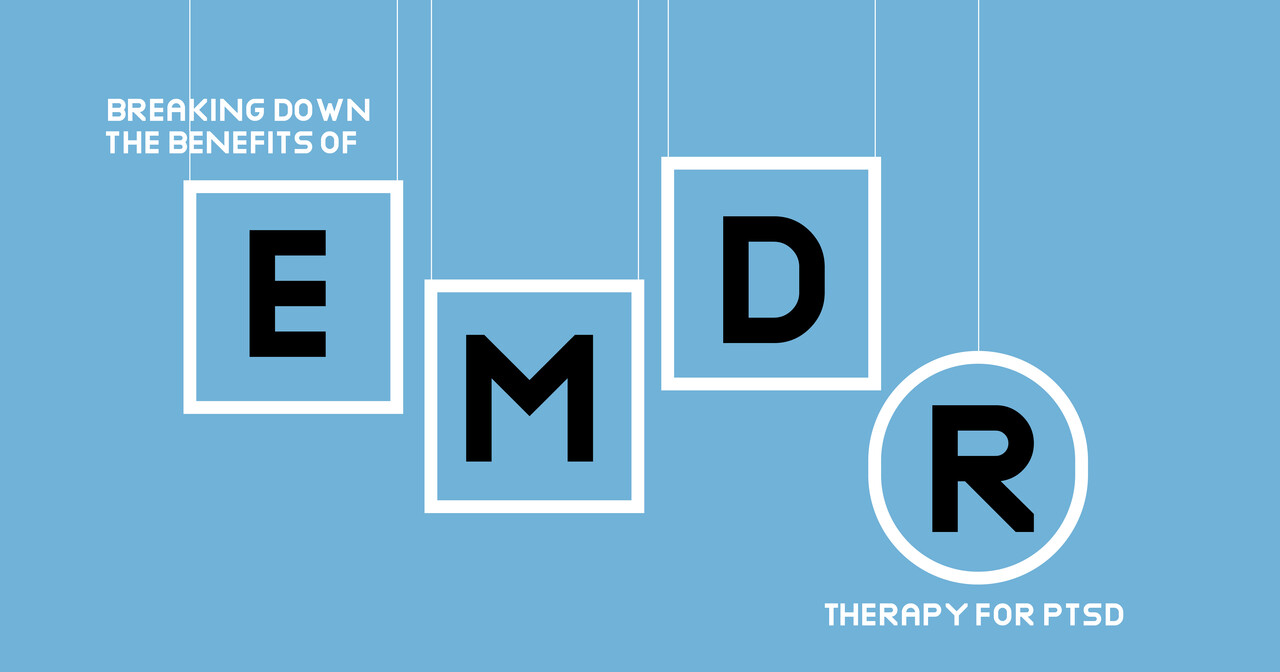Post-Traumatic Stress Disorder (PTD) can profoundly impact a person’s life, causing persistent flashbacks, severe anxiety, and emotional numbness following traumatic experiences. Eye Movement Desensitization and Reprocessing (EMDR) therapy has emerged as a highly effective treatment for PTSD. Developed by Francine Shapiro in the late 1980s, EMDR therapy offers a structured approach to processing traumatic memories and alleviating PTSD symptoms. This comprehensive guide explores the benefits of EMDR therapy, detailing how it works, its effectiveness, and practical insights for those considering this treatment.
What is EMDR Therapy?
Understanding EMDR Therapy
Definition: EMDR therapy is a psychotherapy approach designed to alleviate distress associated with traumatic memories. It utilizes bilateral stimulation, such as guided eye movements, to help individuals process and integrate distressing memories.
Components of EMDR Therapy:
- History-Taking and Treatment Planning: Initial assessment of the patient’s trauma history and development of a personalized treatment plan.
- Preparation: Introducing the EMDR process and establishing a therapeutic alliance.
- Assessment: Identifying target memories and assessing their impact.
- Desensitization: Using bilateral stimulation to reduce distress associated with traumatic memories.
- Installation: Strengthening positive beliefs to replace negative ones.
- Body Scan: Addressing any residual physical sensations related to trauma.
- Closure: Helping the patient return to a state of equilibrium.
- Re-evaluation: Reviewing progress and addressing any remaining issues.
How EMDR Therapy Works for PTSD
The Mechanism Behind EMDR Therapy
Bilateral Stimulation:
- Definition: Bilateral stimulation involves moving the eyes back and forth or using other forms of stimulation to activate both brain hemispheres.
- Purpose: This process helps reprocess traumatic experiences, making them less distressing. Bilateral eye movements are integral to this process, enhancing the therapy’s effectiveness.
Processing Trauma:
- Technique: EMDR uses guided imagery and verbal processing to help individuals confront and make sense of disturbing memories during the desensitization phase, which reduces the emotional charge associated with these unprocessed memories.
- Outcome: Trauma memories are reprocessed, reducing their emotional impact and integrating them into the person’s memory system. The adaptive resolution of these memories helps mitigate post-traumatic stress.
Competitor Insights: Mayo Clinic provides an overview of how EMDR works for trauma. This article will delve deeper into the specific mechanisms of action and techniques used in EMDR therapy.
Key Benefits of EMDR Therapy for PTSD
1. Rapid Relief from PTSD Symptoms
How EMDR Therapy Provides Relief:
- Techniques: EMDR therapy helps individuals process traumatic memories more quickly than traditional talk therapies. The use of eye movements and other forms of bilateral stimulation allows for faster symptom reduction.
- Examples: Many patients report significant reductions in symptoms such as flashbacks and nightmares within a few sessions.
Benefits:
- Quick Results: Effective for those seeking fast relief from severe PTSD symptoms. The brevity of treatment often leads to rapid eye movement (REM) sleep improvements and overall symptom reduction.
- Reduced Symptoms: Alleviates core PTSD symptoms like intrusive thoughts, flashbacks, and hyperarousal.
Competitor Insights: Verywell Mind discusses the rapid relief offered by EMDR for PTSD. This article will explore how EMDR achieves quick results through its structured approach and adaptation of information processing.
2. Evidence-Based Effectiveness
Research Supporting EMDR Therapy:
- Studies: Numerous clinical trials and meta-analyses demonstrate EMDR’s effectiveness in treating PTSD. Randomized studies have shown that EMDR significantly reduces PTSD symptoms in various populations.
- Results: Research shows that EMDR therapy significantly reduces PTSD symptoms in diverse groups.
Key Studies:
- Study: A study published in JAMA Psychiatry found that EMDR therapy is highly effective for treating PTSD, with many patients experiencing a reduction in symptoms. This study attests to EMDR’s successful treatment outcomes.
- Meta-Analysis: Research in The Lancet Psychiatry supports EMDR as a first-line treatment for PTSD.
Benefits:
- Proven Success: EMDR therapy is supported by a substantial body of evidence and is considered a clinically effective treatment.
- Clinical Endorsements: Recommended by organizations such as the American Psychological Association (APA) and the World Health Organization (WHO).
Competitor Insights: APA PsycNet and PubMed feature studies on EMDR’s efficacy. This article will highlight recent research and evidence supporting EMDR for PTSD.
3. Comprehensive Treatment for Trauma
Holistic Approach:
- Techniques: EMDR addresses both the cognitive and emotional aspects of trauma. The holistic approach incorporates emotional responses and distressing experiences to facilitate healing.
- Examples: EMDR helps patients process negative beliefs and emotional responses associated with trauma, enhancing the adaptive information processing model.
Benefits:
- Holistic Treatment: Provides a comprehensive approach to treating trauma by addressing multiple facets of PTSD, including somatic symptoms and stress responses.
- Emotional Healing: Facilitates deep emotional healing through structured therapeutic techniques, addressing negative emotions and painful memories.
Competitor Insights: The Trauma and Mental Health Report covers the holistic nature of EMDR. This article will offer a detailed look at how EMDR’s multifaceted approach benefits PTSD treatment.
4. Enhanced Self-Efficacy and Coping Skills
Developing Coping Skills:
- Techniques: EMDR therapy helps individuals develop coping strategies to manage trauma-related stress and anxiety disorders. Self-control techniques and deep breathing exercises are often integrated.
- Examples: Patients learn new ways to cope with anxiety and stress through the EMDR process, enhancing their ability to manage stress-related disorders and performance anxiety.
Benefits:
- Increased Self-Efficacy: Patients gain confidence in their ability to manage PTSD symptoms. This increase in self-efficacy is crucial for emotional stability and effective management of mental health conditions.
- Improved Coping Skills: Develop practical skills for dealing with trauma and emotional distress, aiding in the management of post-traumatic stress and panic attacks.
Competitor Insights: Mindfulness.org discusses how therapy enhances coping skills. This article will expand on how EMDR therapy builds self-efficacy and provides effective coping strategies.
5. Non-Invasive and Safe Treatment
Safety and Accessibility:
- Techniques: EMDR therapy is a non-invasive treatment option for PTSD. It does not involve medications or invasive procedures, making it a safe space for individuals seeking alternative treatments.
- Examples: The therapy does not involve auditory tones or tactile stimulation in a way that could be perceived as invasive.
Benefits:
- Safe for Most Patients: EMDR is a safe and well-tolerated treatment for individuals with PTSD, with minimal potential side effects compared to medication-based treatments.
- Accessible Therapy: Provides an effective alternative to medication-based treatments, which may be preferable for those concerned about adverse effects.
Competitor Insights: The National Institute for Health and Care Excellence (NICE) supports EMDR as a safe treatment for PTSD. This article will highlight the non-invasive nature of EMDR and its safety profile.
Getting Started with EMDR Therapy
How to Find an EMDR Therapist
Steps to Take:
- Search for Certified Therapists: Look for therapists certified in EMDR through organizations like the EMDR International Association (EMDRIA).
- Consultations: Schedule consultations to find a therapist who fits your needs and goals.
- Insurance Coverage: Check if your insurance covers EMDR therapy.
Resources:
- EMDRIA Directory: Find EMDR therapists through the EMDR International Association.
What to Expect in Your First EMDR Session
Expectations:
- Initial Assessment: Discuss your trauma history and therapy goals.
- Introduction to EMDR: Learn about the EMDR process and techniques, including the assessment phase and treatment planning.
- Beginning Treatment: Start with the first phases of EMDR therapy, focusing on target images and disturbing experiences.
Tips for Success:
- Be Open: Approach the therapy with an open mind and readiness to address previous sessions.
- Communicate: Share your concerns and questions with your therapist to ensure a safe space for effective therapy.
Competitor Insights: Healthline provides information on what to expect from EMDR sessions. This article will guide readers in preparing for their first EMDR therapy session.
Future Directions for EMDR Therapy
Emerging Trends and Innovations
Future Directions:
- Research: Ongoing studies aim to refine EMDR techniques and explore new applications, including the use of auditory and tactile stimulation.
- Innovations: Advances in therapy techniques and technology for enhanced EMDR practices, such as adaptive information processing models and new applications for patients.
Competitor Insights: The Journal of Traumatic Stress explores future trends in EMDR therapy. This article will highlight emerging practices and innovations in the field.
Conclusion
EMDR therapy offers a range of benefits for individuals struggling with PTSD, from rapid symptom relief and evidence-based effectiveness to comprehensive trauma treatment and the development of coping skills. By understanding how EMDR works, exploring its benefits, and learning from real-life success stories, you can decide whether this therapy is right for you.
Takeaway Points:
- Effective for PTSD: EMDR therapy is a proven and effective treatment for PTSD.
- Holistic Approach: Offers a comprehensive approach to trauma recovery.
- Rapid Results: Many individuals experience significant symptom relief relatively quickly.
- Safe and Non-Invasive: A safe alternative to medication-based treatments for PTSD.
- Success Stories: Real-life testimonials highlight the positive impact of EMDR therapy.
If you are considering EMDR therapy for PTSD, consult with a certified EMDR therapist to explore how this treatment can support your mental health journey.









